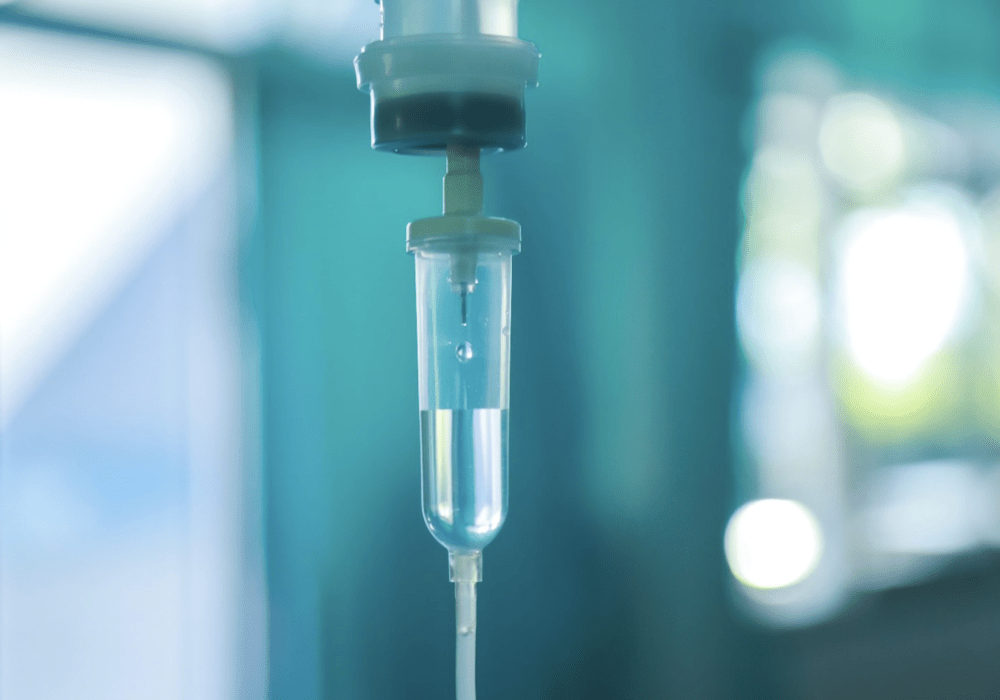After a single-arm clinical trial demonstrated an overall response rate of 31.7% in 106 patients with folate receptor (FR) alpha–positive, platinum-resistant epithelial ovarian, fallopian tube, or primary peritoneal cancer, the U.S. Food and Drug Administration granted mirvetuximab soravtansine-gynx (Elahere®) accelerated approval on November 14, 2022.
Category/Class
FR alpha–directed antibody-drug conjugate that consists of a monoclonal antibody of immunoglobulin G1 subtype against a FR
Mechanism of Action
A microtubule inhibitor, DM4, attaches to the immunoglobulin G1 chimeric antibody. When bound to FR alpha, mirvetuximab soravtansine-gynx releases DM4, disrupting the cell’s microtubule network and resulting in apoptosis.
Indication
Adult patients with FR alpha–positive, platinum-resistant epithelial ovarian, fallopian tube, or primary peritoneal cancer who received one to three prior systemic treatment regimens and bevacizumab
Dosing
6 mg/kg (adjusted ideal body weight) via IV every three weeks until patients experience disease progression or unacceptable toxicity
Administration
Mirvetuximab soravtansine-gynx is not compatible with normal saline and must be diluted in 5% dextrose. Use 5% dextrose to flush IV lines to ensure the full dose is administered.
Premedicate patients with a corticosteroid, antihistamine, and antipyretic at least 30 minutes prior to infusion. Patients should also receive an antiemetic, ophthalmic topical steroids, and lubricating eye drops.
Infuse through a 0.2 or 0.22 mcm polyethersulfone inline filter. For the initial dose, use a rate of 1 mg per minute. If well tolerated after the first 30 minutes, increase the infusion rate to 3 mg per minute. If the higher rate is well tolerated after another 30 minutes, increase to the maximum 5 mg per minute rate. If no infusion-related reactions occur with the first dose, subsequent doses may be infused at the maximum tolerated rate and titrated up to 5 mg per minute as tolerated.
Adverse Reactions
Mirvetuximab soravtansine-gynx has a black box warning for severe ocular toxicities, including visual impairment, keratopathy, dry eye, photophobia, eye pain, and uveitis.
Other reported adverse events include infusion-related reactions, pneumonitis, peripheral neuropathy, embryo-fetal toxicity, fatigue, increased aspartate aminotransferase, nausea, abdominal pain, decreased lymphocytes, diarrhea, decreased albumin, constipation, increased alkaline phosphatase, and decreased magnesium, leukocytes, neutrophils, and hemoglobin.
Nursing Considerations
Concomitant use with a strong CYP3A4 inhibitor may increase the risk for adverse events.
For grade 2 infusion-related reactions, stop the infusion, administer supportive treatment, and resume the infusion at 50% of the previous rate after symptoms resolve. If no additional symptoms appear, increase the rate as appropriate to the maximum allowable rate, as tolerated. Administer additional premedication for future cycles. For grade 3 or 4 infusion-related reactions, stop the infusion, administer supportive treatment, and consider permanently discontinuing treatment.
Because of the risk for ocular toxicities, visual acuity and slit lamp exams must be conducted prior to initiating therapy, every other cycle for the first eight cycles, and then as clinically needed. Artificial tears and ophthalmic topical steroids can help to prevent ocular toxicities. If ocular toxicities develop, withhold treatment until resolved, then resume at the same or a reduced dose or at a reduced dose. Discontinue treatment for grade 4 or higher ocular toxicities.
Assess patients’ respiratory status during infusions and monitor for signs of peripheral neuropathy.
Patient Education
Inform patients about the risk for ocular toxicity, the need for periodic eye exams and frequent self-administration of eye drops, and to avoid using contact lenses during treatment. Have them promptly report any visual changes as well as any new or worsening respiratory symptoms. Patients of reproductive potential should use effective contraception during treatment and for seven months after the last dose. Do not breastfeed during treatment and for one month after the last dose.
Special Considerations
No clinically meaningful differences in efficacy or safety were observed in patients older than 65 years. Efficacy has not been established in pediatric patients. Avoid use in patients with moderate to severe hepatic impairment.
Safe Handling
Mirvetuximab soravtansine-gynx is considered a hazardous drug. Use safe handling precautions.
Patient Assistance
Visit Elahere Support Services, call 833-ELAHERE, or email ELAHERESupport@cardinalhealth.com.






